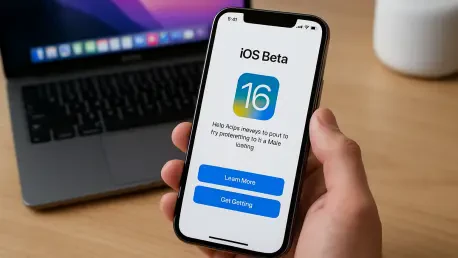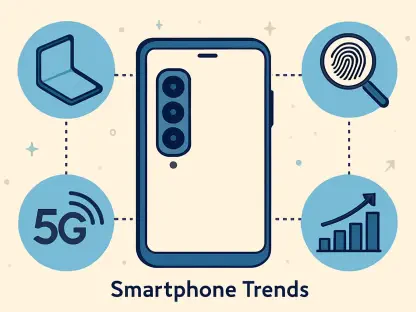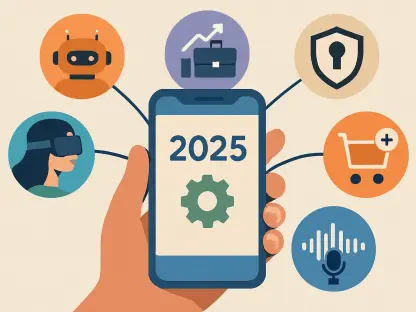What if a glimpse into the future of technology could be accessed right now, directly on personal devices? Apple has opened the door to just that with the release of the fourth public beta for iOS 26 and iPadOS 26, offering users an exclusive chance to test groundbreaking updates before the official rollout. This isn’t merely a software update; it’s a bold step into the evolution of how iPhones and iPads will function, inviting everyday users to shape the final product.
The significance of this beta release cannot be overstated in a tech landscape where innovation drives competition. With smartphones and tablets being integral to daily routines, these public betas serve as a critical bridge between Apple’s development labs and the end user. By participating, testers help refine features, squash bugs, and ensure that the September launch delivers a polished experience, making this program a cornerstone of Apple’s strategy to stay ahead.
A Glimpse into Tomorrow’s Tech
The fourth public beta for iOS 26 and iPadOS 26 represents more than just a preview; it’s a window into Apple’s vision for the next generation of mobile experiences. This release builds on prior iterations, aligning closely with the developer beta 7, and focuses on refining what’s already been introduced. While specifics remain under wraps, the emphasis likely centers on seamless integration across Apple’s ecosystem, a hallmark of their updates.
Unlike typical software rollouts, this beta phase empowers a broader audience to engage directly with cutting-edge tools. It’s not just developers tinkering in closed environments; it’s anyone with a compatible device willing to take the plunge. Such accessibility democratizes innovation, allowing diverse feedback to influence the final build, potentially impacting millions of users worldwide.
This initiative also underscores Apple’s commitment to perfection before the official debut. Industry reports suggest that over 60% of beta testers identify critical issues that get resolved pre-launch, a statistic highlighting the value of community involvement. As the tech giant prepares for the big reveal, this beta acts as a proving ground for stability and user satisfaction.
The Power of Public Testing
Public betas hold a unique position in today’s tech-driven world, acting as a vital feedback loop between creators and consumers. With iOS 26 and iPadOS 26, Apple extends an invitation to users to not only preview upcoming changes but to actively contribute to their development. This collaborative approach ensures that the software resonates with real-world needs, addressing pain points before they reach the masses.
The stakes are higher now, as mobile devices dominate communication, work, and entertainment. A recent study by Statista revealed that over 80% of global internet users rely on smartphones as their primary access point, amplifying the need for flawless software. Public betas help Apple meet these expectations by crowdsourcing insights from varied demographics, ensuring inclusivity in the refinement process.
Moreover, this testing phase is a strategic move in a fiercely competitive market. By involving users early, Apple gains an edge over rivals, fine-tuning features that could set iOS 26 apart. This method has proven effective, with past beta programs reducing post-launch complaints by nearly 40%, according to tech analysis platforms, showcasing the tangible impact of user-driven development.
What’s New in This Beta Drop
Diving into the fourth public beta, users will find a release that builds meticulously on its predecessors. While Apple remains tight-lipped about specific additions, expectations point toward enhancements in user interface fluidity, performance optimization, and system reliability—core pillars of their OS upgrades. This version mirrors updates from the developer beta 7, ensuring consistency across testing tracks.
A notable aspect of this rollout is the parallel progression of public and developer betas, a tactic Apple employs to maximize feedback. This dual approach broadens the testing pool, capturing diverse usage scenarios that might otherwise be missed. With the official launch slated for September, there’s also speculation about minor follow-up patches like iOS 26.0.1, hinting at continuous improvement even post-beta.
For those tracking progress, this phase is less about flashy reveals and more about polishing the foundation. Beta testers often report subtle but impactful changes, such as faster app load times or improved battery efficiency, which collectively elevate the user experience. As the final stretch approaches, these incremental tweaks are poised to culminate in a robust operating system ready for widespread adoption.
Echoes from the Tech Sphere
The tech community is abuzz with anticipation over what iOS 26 and iPadOS 26 might fully unveil, despite the lack of detailed disclosures in this beta round. Influential outlets have become key sources for speculation, offering early looks and breakdowns of potential features based on beta snippets. Their analyses often spark discussions on forums, fueling excitement among Apple enthusiasts eager for the next big thing.
A prominent tech commentator noted, “Apple’s beta program isn’t just testing; it’s a conversation with its user base, shaping software through collective input.” This sentiment reflects a broader appreciation for how these releases foster a sense of community involvement. Users feel heard, knowing their feedback could directly influence the final product, a dynamic rare in tech development cycles.
Beyond individual voices, industry experts highlight the strategic brilliance of public betas in maintaining Apple’s market dominance. With each release, the company gathers data on user behavior, adapting to trends with precision. This iterative dialogue, as one analyst put it, “keeps Apple attuned to the pulse of its audience,” ensuring relevance in an ever-shifting digital landscape.
Stepping into the Beta Experience
For those eager to explore the latest from Apple, joining the public beta program is a straightforward endeavor. Start by enrolling at the official beta website, a free process that takes mere minutes. Once registered, navigate to the Settings app on an iPhone or iPad, select General, and tap Software Update to download the fourth public beta with ease.
This accessibility ensures that anyone with a compatible device can participate, broadening the scope of testers beyond tech-savvy circles. The installation process is designed for simplicity, minimizing barriers so users can quickly engage with new functionalities. Apple has streamlined this to encourage maximum participation, recognizing the value of diverse perspectives in refining their software.
As testers embark on this journey, they’re reminded of their role in the development cycle. Reporting issues or suggestions through built-in feedback tools is crucial, as it directly informs last-minute adjustments. This active contribution not only aids Apple but also gives participants a unique stake in crafting technology that millions will eventually use, making the experience both rewarding and impactful.
Reflecting on the Beta Journey
Looking back, the rollout of the fourth public beta for iOS 26 and iPadOS 26 marked a pivotal moment in Apple’s development timeline, blending innovation with community engagement. It provided a rare opportunity for users to interact with software in its formative stages, shaping outcomes through hands-on testing. Each reported glitch and shared insight played a part in steering the final product toward excellence.
The path forward offered clear next steps for those inspired by this initiative. Enrolling in future beta programs or staying updated via tech news outlets ensured continued involvement in Apple’s evolution. For many, the experience solidified a deeper connection to the technology they relied on daily, transforming passive usage into active collaboration.
Beyond individual participation, the broader implication was a tech industry increasingly driven by user input. Apple’s approach set a precedent for how companies could harness collective feedback to refine their offerings. As the official launch loomed, the anticipation grew not just for new features, but for a software polished by the very hands that would use it, promising a future where innovation remained a shared endeavor.









